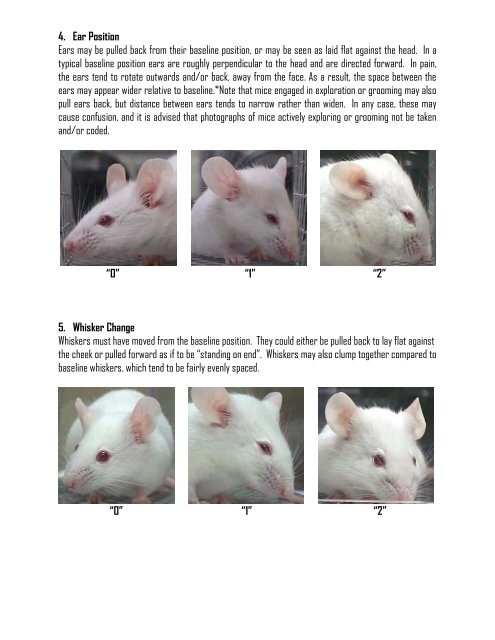MOUSE GRIMACE SCALE (MGS): THE MANUAL
MOUSE GRIMACE SCALE (MGS): THE MANUAL
MOUSE GRIMACE SCALE (MGS): THE MANUAL
You also want an ePaper? Increase the reach of your titles
YUMPU automatically turns print PDFs into web optimized ePapers that Google loves.
4. Ear Position<br />
Ears may be pulled back from their baseline position, or may be seen as laid flat against the head. In a<br />
typical baseline position ears are roughly perpendicular to the head and are directed forward. In pain,<br />
the ears tend to rotate outwards and/or back, away from the face. As a result, the space between the<br />
ears may appear wider relative to baseline.*Note that mice engaged in exploration or grooming may also<br />
pull ears back, but distance between ears tends to narrow rather than widen. In any case, these may<br />
cause confusion, and it is advised that photographs of mice actively exploring or grooming not be taken<br />
and/or coded.<br />
“0” “1” “2”<br />
5. Whisker Change<br />
Whiskers must have moved from the baseline position. They could either be pulled back to lay flat against<br />
the cheek or pulled forward as if to be “standing on end”. Whiskers may also clump together compared to<br />
baseline whiskers, which tend to be fairly evenly spaced.<br />
“0” “1” “2”


